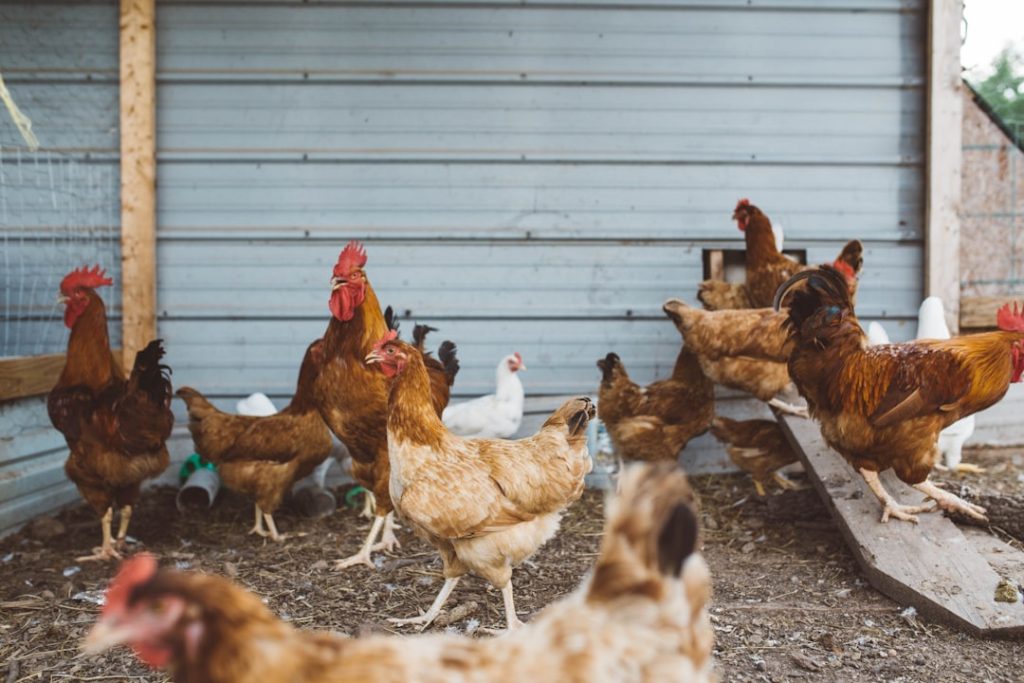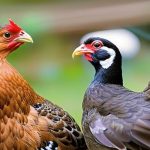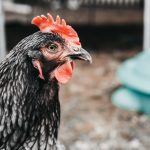Japan’s poultry industry has evolved significantly since chickens were first introduced to the country in ancient times. Today, Japan ranks among the world’s leading producers of chicken meat and eggs, with a robust domestic market and an expanding export sector. The industry plays a crucial role in Japan’s agricultural economy, providing substantial employment and economic opportunities in rural areas.
Consumer demand for chicken products in Japan has shown consistent growth, driven by shifting dietary preferences and nutritional trends. Chicken is a versatile and popular protein source in Japanese cuisine, featuring prominently in both traditional and contemporary dishes. As a result, the poultry industry has become an essential component of Japan’s food supply chain, contributing to national food security and economic stability.
The Japanese poultry industry encompasses a diverse range of production systems, including small family-operated farms, large-scale commercial enterprises, and specialized breeding facilities. This variety in production methods allows the industry to meet different market demands and consumer preferences, ensuring a consistent supply of high-quality chicken products nationwide. Japan’s poultry industry is renowned for its emphasis on quality and safety standards, which has earned it a reputation for producing premium chicken meat and eggs.
Table of Contents
- 1 Regulations and Standards for Chicken Farming in Japan
- 2 Technology and Innovation in Chicken Farming
- 3 Welfare and Ethical Considerations for Chickens in Japan
- 4 Japanese Chicken Breeds and Their Characteristics
- 5 Challenges and Solutions in Japan’s Chicken Farming Industry
- 6 Future Outlook for Japan’s Chicken Farming Sector
- 7 FAQs
- 7.1 What measures does Japan take to keep its chickens healthy?
- 7.2 What are the biosecurity protocols in place for Japan’s chicken farms?
- 7.3 Does Japan have a vaccination program for its chickens?
- 7.4 How does Japan regulate the import and export of poultry products?
- 7.5 What role does regular health monitoring play in Japan’s chicken industry?
Key Takeaways
- Japan’s chicken industry is a significant part of its agricultural sector, with a focus on both meat and egg production.
- Regulations and standards for chicken farming in Japan are strict, ensuring high quality and safety for consumers.
- Technology and innovation play a crucial role in improving efficiency and sustainability in chicken farming in Japan.
- Welfare and ethical considerations for chickens are increasingly important in Japan, with a focus on humane treatment and living conditions.
- Japanese chicken breeds have unique characteristics and are highly valued for their meat and eggs, contributing to the diversity of the industry.
Regulations and Standards for Chicken Farming in Japan
Regulations for Animal Welfare and Disease Control
One of the key regulations governing chicken farming in Japan is the Livestock Industry Act, which sets out the basic requirements for animal welfare, hygiene, and disease control on poultry farms. This act outlines the responsibilities of chicken farmers in maintaining clean and sanitary conditions, providing proper nutrition and healthcare for their birds, and preventing the spread of infectious diseases. In addition, the act also regulates the use of antibiotics and other veterinary drugs to ensure that chicken products are safe for human consumption.
Food Safety Standards
In terms of food safety, Japan has established rigorous standards for chicken meat and eggs, including strict limits on pesticide residues, microbial contamination, and chemical additives. These standards are enforced through regular inspections and testing by government authorities, as well as industry self-regulation programs that promote best practices in chicken farming.
Ensuring Consumer Confidence
As a result, consumers can have confidence in the safety and quality of Japanese chicken products, knowing that they have been produced in compliance with some of the highest standards in the world.
Technology and Innovation in Chicken Farming
The chicken farming industry in Japan has embraced technology and innovation to improve efficiency, productivity, and sustainability. With a strong emphasis on research and development, Japanese chicken farmers have adopted advanced farming techniques, equipment, and management practices to enhance their operations and meet the growing demand for chicken products. One of the most significant technological advancements in Japanese chicken farming is the use of automated systems for feeding, watering, and environmental control in poultry houses.
These systems help to optimize resource utilization, reduce labor costs, and improve animal welfare by providing precise control over temperature, humidity, ventilation, and lighting. In addition, advanced monitoring and data management technologies allow farmers to track the health and performance of their flocks in real time, enabling early detection of potential issues and proactive management strategies. In terms of genetics and breeding, Japanese chicken farmers have invested in cutting-edge technologies to develop superior breeds with desirable traits such as fast growth, high meat yield, and disease resistance.
Through selective breeding programs and genetic engineering techniques, researchers have been able to enhance the genetic potential of chickens, leading to improved productivity and profitability for farmers. Furthermore, advancements in nutrition science have led to the development of specialized feed formulations that optimize the growth and health of chickens while minimizing environmental impact. Overall, technology and innovation have played a crucial role in shaping the modern chicken farming industry in Japan, allowing farmers to produce more efficiently, sustainably, and profitably while meeting the evolving needs of consumers and society.
Welfare and Ethical Considerations for Chickens in Japan
In Japan, animal welfare and ethical considerations are important aspects of chicken farming, reflecting the country’s cultural values and commitment to responsible stewardship of animals. The Japanese government has established strict guidelines for the humane treatment of chickens on farms, covering aspects such as housing conditions, handling practices, transportation, and slaughter methods. These guidelines are aimed at ensuring that chickens are raised and processed with respect for their natural behaviors and well-being.
To promote animal welfare in the chicken industry, Japanese farmers have adopted various practices to provide a comfortable and enriching environment for their birds. This includes spacious housing with proper ventilation, natural lighting, and access to outdoor areas for free-range or pasture-based systems. Farmers also implement behavioral enrichment activities to stimulate chickens’ natural instincts and reduce stress, such as providing perches, dust bathing areas, and objects for pecking and exploration.
In addition to physical welfare considerations, ethical concerns related to the treatment of chickens extend to their end-of-life processes. In Japan, efforts are made to ensure that chickens are handled humanely during transportation and slaughter, with strict regulations governing the use of stunning methods to minimize pain and distress. Furthermore, there is growing interest in alternative production systems such as organic or pasture-raised chickens that prioritize animal welfare as a core value.
Overall, the welfare and ethical considerations for chickens in Japan reflect a commitment to responsible and compassionate farming practices that prioritize the well-being of animals while meeting the demand for high-quality chicken products.
Japanese Chicken Breeds and Their Characteristics
Japan is home to several indigenous chicken breeds that have been developed over centuries to suit the country’s unique climate, terrain, and cultural preferences. These breeds exhibit distinct characteristics in terms of appearance, temperament, egg production, meat quality, and adaptability to different farming systems. Each breed has its own historical significance and plays a valuable role in Japan’s chicken industry.
One of the most well-known Japanese chicken breeds is the “Jidori,” which translates to “local bird” in Japanese. Jidori chickens are prized for their flavorful meat and are often raised in traditional free-range or semi-free-range systems. They are known for their robustness, slow growth rate, and natural foraging behavior, which contribute to their distinctive taste and texture.
Jidori chickens are typically raised in small-scale farms or backyard settings where they can roam freely and exhibit their natural behaviors. Another notable Japanese chicken breed is the “Onagadori,” which is famous for its long tail feathers that can grow up to several meters in length. Onagadori chickens are considered a national treasure in Japan due to their unique appearance and cultural significance.
While they are primarily kept for ornamental purposes or as show birds, efforts are being made to preserve this rare breed through conservation programs that promote responsible breeding practices. In addition to these indigenous breeds, Japan also raises imported commercial breeds such as broilers (meat chickens) and layers (egg-laying chickens) to meet the demands of modern poultry production. These commercial breeds are selected for their fast growth rate, high feed efficiency, disease resistance, and other traits that optimize productivity in intensive farming systems.
Overall, Japanese chicken breeds showcase a diverse array of characteristics that reflect the country’s rich agricultural heritage and commitment to preserving its unique poultry genetic resources.
Challenges and Solutions in Japan’s Chicken Farming Industry

Demographic Shift and Succession Planning
One of the primary challenges is the aging population of farmers, as many traditional family-owned poultry farms struggle to attract younger generations into the industry. This demographic shift has led to concerns about succession planning, farm management skills transfer, and long-term viability of small-scale poultry operations.
Environmental Sustainability and Resource Management
Another challenge is related to environmental sustainability and resource management. Intensive poultry production can generate significant amounts of waste, such as manure, which can pose environmental risks if not managed properly. Efforts are being made to develop sustainable waste management practices, such as composting, nutrient recycling, and energy recovery from poultry waste, to minimize its impact on soil, water, and air quality.
Disease Outbreaks and Biosecurity Measures
Furthermore, disease outbreaks, such as avian influenza, pose a significant threat to Japan’s chicken farming industry, leading to economic losses and trade disruptions. To address this challenge, Japanese authorities have implemented strict biosecurity measures on poultry farms to prevent disease transmission between flocks and mitigate potential outbreaks through early detection and rapid response protocols.
Solutions for a Sustainable Future
In response to these challenges, various solutions are being pursued to ensure the long-term viability of Japan’s chicken farming industry. This includes initiatives to attract young farmers through training programs, financial incentives, and technological support to modernize poultry operations. Additionally, research efforts are focused on developing sustainable farming practices that minimize environmental impact while maximizing resource efficiency. Overall, addressing these challenges requires collaboration between government agencies, industry stakeholders, research institutions, and community organizations to foster a resilient and sustainable future for Japan’s chicken farming sector.
Future Outlook for Japan’s Chicken Farming Sector
Looking ahead, the future outlook for Japan’s chicken farming sector is characterized by opportunities for growth, innovation, and adaptation to changing market dynamics. With an increasing focus on food security, sustainability, and animal welfare among consumers worldwide, there is growing demand for high-quality chicken products that align with these values. In response to this trend, Japanese chicken farmers are expected to continue investing in technology-driven solutions that enhance productivity while minimizing environmental impact.
This includes further adoption of automated systems for poultry management, precision nutrition programs that optimize feed efficiency and animal health outcomes, as well as advanced genetics research to develop superior breeds with desirable traits. Furthermore, there is potential for diversification within Japan’s chicken farming industry through niche market opportunities such as organic poultry production, heritage breed conservation programs, specialty meat products (e.g., free-range or pasture-raised), and value-added processed foods. These niche markets cater to discerning consumers who prioritize ethical sourcing, traceability, and premium quality in their food choices.
In terms of international trade, Japan’s chicken farming sector is poised for expansion as global demand for Japanese poultry products continues to grow. With a reputation for producing safe, high-quality chicken meat and eggs that meet stringent food safety standards, Japanese exporters have opportunities to access new markets while maintaining strong relationships with existing trading partners. Overall, the future outlook for Japan’s chicken farming sector is characterized by resilience, adaptability, and innovation as it continues to play a vital role in meeting the nutritional needs of a growing population while upholding ethical standards for animal welfare and environmental stewardship.
If you’re interested in learning more about how Japan keeps its chickens, you might also want to check out this article on chicken coop designs in Muskegon. It provides valuable insights into creating a suitable environment for chickens to thrive.
FAQs
What measures does Japan take to keep its chickens healthy?
Japan takes several measures to keep its chickens healthy, including strict biosecurity protocols, regular health monitoring, vaccination programs, and strict regulations on the import and export of poultry products.
What are the biosecurity protocols in place for Japan’s chicken farms?
Japan’s chicken farms adhere to strict biosecurity protocols, which include controlling access to the farms, disinfecting equipment and vehicles, and implementing measures to prevent the spread of diseases from wild birds and other animals.
Does Japan have a vaccination program for its chickens?
Yes, Japan has a comprehensive vaccination program for its chickens to protect them from common diseases such as avian influenza and Newcastle disease. Vaccination is an important part of Japan’s strategy to keep its poultry population healthy.
How does Japan regulate the import and export of poultry products?
Japan has strict regulations in place for the import and export of poultry products to prevent the spread of diseases. These regulations include requirements for health certificates, quarantine measures, and restrictions on products from countries with disease outbreaks.
What role does regular health monitoring play in Japan’s chicken industry?
Regular health monitoring is essential in Japan’s chicken industry to detect and prevent the spread of diseases. This includes regular testing for common poultry diseases and monitoring the overall health and welfare of the chicken population.
Meet Walter, the feathered-friend fanatic of Florida! Nestled in the sunshine state, Walter struts through life with his feathered companions, clucking his way to happiness. With a coop that’s fancier than a five-star hotel, he’s the Don Juan of the chicken world. When he’s not teaching his hens to do the cha-cha, you’ll find him in a heated debate with his prized rooster, Sir Clucks-a-Lot. Walter’s poultry passion is no yolk; he’s the sunny-side-up guy you never knew you needed in your flock of friends!







